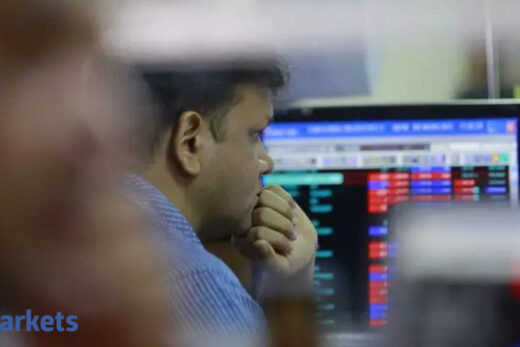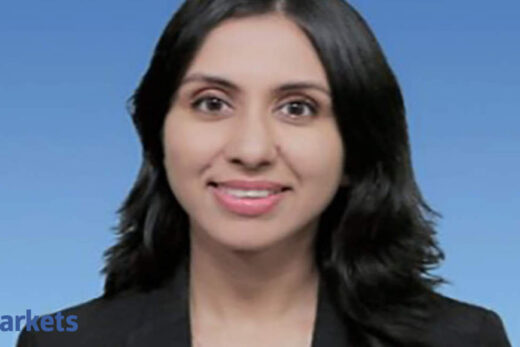When we talk about history, the big variable factor is inflation on one side and interest rate fluctuation on the other. That is how the markets have given double digit returns. We are staring at a different environment of excess liquidity and perhaps low interest rates. How does future calculation and assumptions change because of that?
Interest rate has played a major role because till 2000 we are talking more like double digit or 12-13%-14%; 15% used to be the NCD bonds. Then we talked about 10-12%, then we talked about 7-8% and now corporates are getting money at 4-4.5% also. So there is unprecedented change in the cost of money. Even inflation has moderated in India to around 5-6%. The markets are very global, Europe is at zero or minus, America is at about 1.5% 10 years paper and Japan is again flat. So the issue is that in a globalised environment, the money is pouring in from all over the world. The forex balance has gone to $650 billion and the interest rates cannot be very much misaligned.
If the US 10-year is at about 1.5%, we can only have 6.5% or 7% as your 10-year paper. So if US rates do not go up significantly then we are looking at 6-7% interest rate for a very long time and that is a fundamental shift on how we value growth because this is a growth economy. The chief economist is saying that we will grow for the next decade at 7%. He expects the economy to grow at about 7% for the next eight, 10 years and so with 4-5% inflation, we are talking about 12% nominal GDP and the corporate earnings will grow at 13-14-15%. At 7%, 6% kind of a discount rate, we can see the growth of 12 to 15%. So having an index PE of 25-27 is not out of line.
When you say this bull market cycle is different, what is so different? Every time the market cycle changes, you have also changed as an investor. Ten years ago you would have even got close to investing in a company which was loss making but now you have invested in Zomato?
Yes, so that is what I am saying I am increasing the circle of competence and I could be wrong, I am not saying that I have become master of the game or anything like that but, fundamentally the growth capex is coming from P&L not from the balance sheet and that has to be understood.
When one looks at a loss-making P&L, in some cases, they are actually making losses. What they are saying is that is the scene and they will always be making losses. One has to figure out which are the companies that are showing losses right now. But they have the potential to make billions of dollars of profit in the next four, five years, six years. One has to differentiate between the companies which will never make profit or will make very thin profit and the companies which are actually destined to make a lot of profit because they are not fundamentally addressing a $3 trillion economy, they are addressing a $90 trillion global economy and that changes opportunity size for these companies.
We have to go and see in our due diligence whether these guys are competent and have the business model which is going to match the expectations.
If I look at your famous wealth creation study — Infosys, Wipro, Kotak Mahindra Bank, HDFC — time and again these are the consistent wealth creators. Since you are talking about the digital start up world coming in, hypothetically if this is the wealth creation study of 2030, do you think the names here would be very different because between 2010 and 2020 the names have not changed?
A lot of new names have come. There are two categories; one is the largest wealth creators and the fastest wealth creators so the larger set has not changed much, I mean the changes are slower, they have changed but they are slower in the changes. But in the fastest, every time it is a different colour. That reflects the fastest in five years. The fastest wealth creator companies are the companies which are flavour of the decade or flavour of the time. So, that flavour has been changing.
If you go to see the year 2000 study, almost all of them are tech companies. The 9/10 fastest growing companies were the tech companies and typically the mortality rate in the fastest wealth creating companies is highest because you just cannot sustain 200% compounding, 100% compounding for 10 years. 100% compounded for five years will be like 100 times. The issue is that the level of expansion in valuation is very difficult to justify by fundamentals and when people realise that it is not possible, then things come crashing down. So, this is going to get repeated in digital companies. I have seen it happen with the soya companies, tech companies and real estate companies. This is the time for digital companies.
In the past, you have invested in , HUL, Nestle– all classic consumer franchises, great ROCE companies. They do not raise capital. If one makes a basket of top three consumer companies and top three consumer tech companies, which basket will create more wealth?
Second one.
Why do you say that?
Because the opportunity size is so huge. Three global consumer tech companies are the best example. The pace at which the consumer tech companies will encompass the whole country or the whole world, can’t be done with the old consumer companies. Old consumer companies have already expanded their distribution and their growth rates are very close to the normal GDP growth rates. So they will struggle to grow even at nominal GDP.
For all these names, double digit growth is very aspirational — 10-12%, 13% which is basically your nominal GDP growth rates; even that is being engendered with the help of some kind of inorganic acquisition. These companies are very competent with massive free cash flows. Almost 100% of profit is free cash flow so there is a tremendous value creation for the shareholders. But these companies are available at 80-90-100 PE multiple. So they will make as much as these three tech companies but today the growth in the profits from a humble Rs 100 or 200 crore to maybe Rs 2,000 crore, 5,000 crore will happen in digital companies and not so much in the old companies.
Read also:
Market will correct and mini crashes are likely: Raamdeo Agrawal
My sense is that the old companies will continue to keep going at 12-15%, whereas these companies will grow at the rate of 40-50-60% and maybe even 100% for a few years and then operating leverage will kick in and they will grow slower. The next 10 years are the most exotic time for the digital companies.
When one invested in the IT sector, the idea was to buy a software company because the sector did well but Zomato’s business model is different from Nykaa and Nykaa’s business model is going to be very different from Policybazaar. You can call them digital company but how does one understand which is a good digital company?
One of the challenges with the digital companies is that they are different. Every single company is different. Two companies are not the same at all. Zomato is different from Nykaa and Nykaa is different from some other companies. They are addressing very niche opportunities and since they always lead in the digital space, very quickly there is consolidation even while growth is there. So there are typically going to be two or three players. It is almost like a winner takes all in that particular space.
They are going to be very unique and right now they will be doing it in India and they have a potential to go global also. Once the framework is clear on how to look at digital companies, then one has to go to the specific company and try to fit that company to that framework and figure out whether it meets your objective or not.
You have run a portfolio which by and large is tilted towards financials – private banks, insurance. The market is telling us that financials are not participating, high growth companies are not going to banks for capital. wants to do capex but they are generating so much of cash flow they do not go to the bank. Same is the case with Tata Steel. What happens to financials?
For one, private capex will start. There are a few companies like Tata Steel and they have a terrific cash flow for a few years. They do not need bank support but they are the companies which actually took all the loans in the last 5-7 years. There will be other segments like infrastructure or cement companies and a lot of consumer companies.
So, I do not know from where that loan demand will come but as the economy picks up, if as a country we can deliver 7% to 8% the way China does it in whatever we do, rest all will be taken care of. There are not many growth economies the size of India. When we go from $3 trillion to $6 trillion in the next seven, eight years, it will require Rs 150-160 lakh crore of credit. The composition could be different but we will need credit.
Economic development is on the back of credit intensity. Credit intensity of incremental $3 trillion will be far higher. Now where are the banks which are going to do it? There are only five, six banks which can underwrite and even the government is saying now we want to fold up all the PSU banks into four or five SBI type large banks. So five PSU banks and five private sector banks — all in all we will have 10 banks which will underwrite maybe another Rs 110 lakh crore worth of credit, which is a huge opportunity. So value migration from public to private sector for the credit disbursal is happening and that is going to give a massive edge to the banks which can do well.



